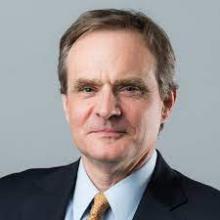You are here
America comes roaring back
Sep 03,2022 - Last updated at Sep 03,2022
WASHINGTON, DC — An air of pessimism about the future of the American economy pervades some official circles in the United States and elsewhere. It is time to dispel it.
The pessimists worry that a series of supply shocks over the past two years, owing to the COVID-19 pandemic, production disruptions in China and the Russian invasion of Ukraine, has derailed economic growth. Moreover, the US Federal Reserve (Fed) is now inclined to raise interest rates until monetary policy, in the words of Fed Chair Jerome Powell, brings “some pain to households and businesses”, which is supposedly the only way to bring inflation under control.
But an alternative view has not received nearly the attention it deserves. According to its proponents, the US economy is poised for significant sustained economic expansion, because developments in the past three years have removed, through luck and a new policy consensus, a major impediment to inclusive growth.
In recent decades, innovation became concentrated in a few large cities, mostly on the East and West Coasts, which have also become increasingly expensive places to live. But private-sector responses to the pandemic have weakened the link between location and innovation, and new bipartisan legislation will now spread new economic opportunities around the country.
Research by Chang-Tai Hsieh of the University of Chicago and Enrico Moretti of the University of California, Berkeley have found that restrictions on housing supply in “high productivity cities” in the US limited the inflow of workers to booming areas. The rent was just too damn high. Without the restrictions on housing supply, Hsieh and Moretti estimate that US growth would have been 50 per cent higher between 1964 and 2009, a massive effect.
One policy response would be to build more housing in places like San Francisco and Boston. But such ideas consistently run into local opposition and seem unlikely ever to gain traction. The obvious alternative, proposed by Jonathan Gruber and me in Jump-Starting America, is to create more opportunity for higher-productivity employment in places where people already live, outside of the major established tech hubs.
When Gruber and I published these ideas in 2019, the reaction was polite but muted. Breaking the tyranny of distance seemed hard to most people. After all, they reasoned, didn’t you need to come to the office or lab at least four days a week (or preferably five!) to be productive?
But there have been three major changes since then.
The first concerns workers’ attitude. Most people do not like commuting, particularly if it involves sitting in traffic or being close to other people on public transportation. Most people do not want to go to the office on Fridays, and many would prefer to appear in person no more than two days per week. Opinions obviously vary, according to personality type, stage of career, and other characteristics, but workers are clearly expressing an interest in much more flexible work schedules and workplace arrangements.
Second, while some companies would prefer everyone to show up every day, a tighter labour market means that managers must pay attention to how talented people want to arrange their lives. At least in part, this means thinking about moving tasks away from those crowded and expensive coastal areas to places with more affordable real estate and shorter commutes. Gruber and I identified more than 100 places with the potential to become next-generation tech hubs. (Our website, Jump-StartingAmerica.com, offers more details on how to think about this.)
Lastly, policy at the federal level has shifted dramatically. Supported by 64 senators, the recently passed CHIPS and Science Act of 2022 makes a major federal commitment to encourage the development of 20 new tech hubs. Funding can be used for infrastructure, workforce development, and other sensible local investments. Competition between places for this money will likely be intense, creating an incentive to become a more attractive place for companies to locate part of their workforce.
The Fed is concerned about a tight labor market, but the flip side of low unemployment is that it should motivate companies to seek out places where they can hire people and build worker loyalty. The race is on for employers to find new places to develop. Money from the federal government will help, but, as the White House emphasises, this job creation will be led by the private sector.
At the same time, it is important that this increased investment in communities does not displace the people who live there. Stepped-up workforce training is essential. It is also crucial to permit the construction of enough housing to accommodate an increasing local population. Otherwise, we will just get more (smaller) versions of Manhattan, San Francisco, or Sun Valley, which have become unaffordable for most people.
More broadly, the CHIPS and Science Act recognises that the US needs to renew its commitment to basic science and to the process that turns plausible ideas into real products. If the US does this on an expanded basis, and spreads those opportunities around the country, the result will be an acceleration of economic growth and much broader distribution of its benefits.
Simon Johnson, a former chief economist at the International Monetary Fund, is a professor at MIT’s Sloan School of Management and a co-chair of the COVID-19 Policy Alliance. Copyright: Project Syndicate, 2022.










